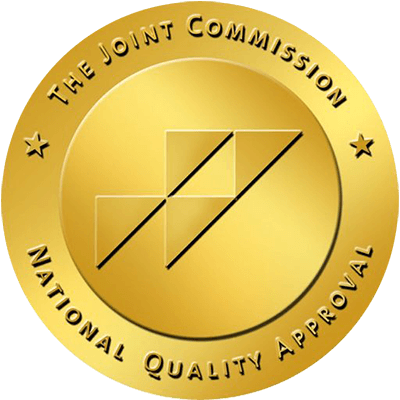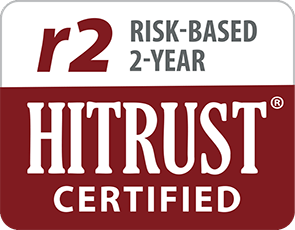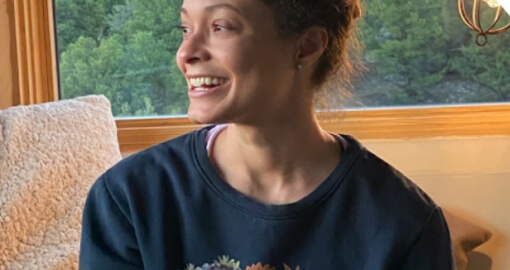Written by Shannon,
Brightside Health
7 Minute Read

Medically reviewed by:
Erin O'Callaghan, PHD
Director of Therapy
10 Minute Read

It’s normal to feel scared when watching a horror movie or getting lost in a crowd, but these are situations where feeling fear is to be expected. For some people, however, certain objects, people, places, or situations, may make them feel excessively afraid even if there isn’t a real reason to be.
When fear starts to intrude on your daily life, it might be a type of anxiety disorder known as a phobia. Let’s talk more about phobias and how you can work towards overcoming them.
What is a Phobia?
A phobia is marked by a persistent, excessive, unrealistic fear of places, objects, situations, people, or activities. People with phobias will usually avoid these situations entirely, and if they’re forced to face these phobias, they experience extreme feelings of distress and anxiety.
What Causes Phobias?
Phobias can be divided into two categories: specific and complex.
Specific phobias are limited to specific circumstances or objects. For example, someone with arachnophobia is purely afraid of spiders and can avoid distress by never interacting with this insect.
Complex phobias are more general and are typically harder to avoid. Someone with claustrophobia, or the fear of confined spaces, may be triggered by getting into an elevator, entering a small closet, or driving on a congested highway. People with complex phobias often need to change their lives drastically to avoid stressful situations.
Many phobias occur because of negative or traumatic experiences related to the object of fear. For instance, someone may have been bitten by a poisonous spider and then developed a fear of all spiders, as they associate every spider with causing them harm.
Social Phobia
A common complex phobia is social phobia, also called social anxiety disorder. This is an intense fear of being watched and judged by others. In turn, people with social phobia often avoid day-to-day activities like interacting with co-workers, going to the gym, or making small talk with strangers during their day-to-day tasks and errands.
People with social phobia dread public speaking in any capacity and might experience physiological symptoms such as a racing heart, trembling, shortness of breath, or dizziness (similar to a panic attack) when confronted with similar stressors.
Agoraphobia
Another common complex phobia is agoraphobia, in which individuals fear or avoid places that might cause them to feel trapped or helpless. People with agoraphobia often fear situations in which there is no perceivable escape, such as being stuck in traffic on a bridge or flying in an airplane.
For that reason, those who are agoraphobic might completely avoid situations where they could possibly be put in a scenario where they lose control of their place in that situation. They may add hours to their road trip to avoid tunnels or bridges, or they may refuse to get on amusement rides or participate in tours because they don’t have the option to immediately exit the situation at their own will.
Other Common Phobias
The four types of phobias that we’ve already discussed are among the most common phobias among the general population. With that in mind, an individual can develop a phobia of anything, even something as seemingly harmless as balloons (globophobia).
Other common phobias include:
- Acrophobia: The fear of heights.
- Aerophobia: The fear of flying.
- Astraphobia: The fear of thunderstorms.
- Trypanophobia: The fear of injections.
- Ophidiophobia: The fear of snakes.
- Mysophobia: The fear of germs.
- Cynophobia: The fear of dogs.
Symptoms
Phobias can present themselves both physically and psychologically.
When confronted with a distressing situation, an individual may exhibit the following physical symptoms:
- Dizziness or lightheadedness
- Rapid heart rate
- Sweating
- Difficulty breathing
- Nausea or vomiting
- Trembling or shaking
- Tightness in the chest
Additionally, the individual might feel a few different psychological symptoms:
- Fear of losing control
- Fear of fainting
- Dissociation, or losing touch with reality
If the symptoms are intense enough, it might trigger a panic attack. Since many of the symptoms associated with phobias are physical and intense, it can be harmful to an individual’s health if the phobia is not addressed.
What Happens To The Brain?
You’ve probably heard of the fight or flight response, or the stress response. Your amygdala is the area of your brain that contributes to the emotional processing of fear. When it perceives danger, it sends information about this potential threat to the hypothalamus.
The hypothalamus communicates with the body through the autonomic nervous system, which controls involuntary processes like heart rate and breathing. One of the components of the autonomic nervous system is the sympathetic nervous system. When prompted, it triggers the stress response to provide the body with a burst of energy to either flee or confront a threat.
Everyone experiences the stress response in threatening situations, but people with phobias have a dysfunction in fear processing that causes them to feel irrationally afraid in situations where danger is not actually present.
Who’s At Risk?
Some people experience traumatic events, but don’t go on to develop phobias. Conversely, there are some risk factors that may put someone at a predisposition for developing one:
- Age: Young children are more likely to develop a specific phobia.
- Phobias within the family: Observing a family member’s intense reaction to certain stimuli, or inherited tendencies, can make someone prone to becoming phobic.
- Negative experiences: Having a negative experience in relation to an object, person, or place may put someone at risk of developing a phobia. Additionally, hearing about someone else’s negative experiences can lead to the development of phobias, too.
How To Treat Phobias
Many people with specific phobias may be able to go without treatment by simply avoiding the stressors that cause them to feel threatened. But for people with complex phobias, going untreated can have harmful effects on daily life.
One route that is particularly effective for treating phobias is cognitive behavioral therapy (CBT), which involves a therapist guiding you through implementing changes in the way you think to help you overcome, or at least learn to more effectively cope with, your phobia and feelings of stress.
In particular, “exposure therapy” is a form of CBT where you are gradually exposed to your fear over time, allowing you to become less anxious.
Medications, such as antidepressants, can also be an option for treating phobias, though they are often only prescribed to treat the effects of phobias, such as anxiety. It’s usually used in combination with CBT rather than on its own.
Finally, self-help techniques can be very valuable for individuals in order to alleviate the stress associated with their fears. Methods such as meditation or breathing techniques can help to guide you through better responses to stressful stimuli as well as alleviating some of the physical symptoms when confronted with a phobia.
Overview
Phobias are a type of anxiety disorder marked by a persistent and irrational fear of objects, places, people, situations, or activities. Phobias can be specifically related to single things, or they might encompass a wide range of stimuli, such as small spaces.
Regardless, phobias can impede daily life and cause people to miss out on special occasions due to their fears.
The good news is that almost all phobias can be successfully treated with cognitive behavioral therapy, medication, and self-help techniques.
Anxiety and depression come in many forms, but Brightside specializes in treating the full spectrum of related conditions with personalized treatment plans based on evidence and data.
To get started with Brightside, start with your free assessment here.
Sources:
Social Anxiety Disorder: More Than Just Shyness | National Institute of Mental Health
Agoraphobia – Symptoms and causes | The Mayo Clinic
Understanding the stress response | Harvard Health



















